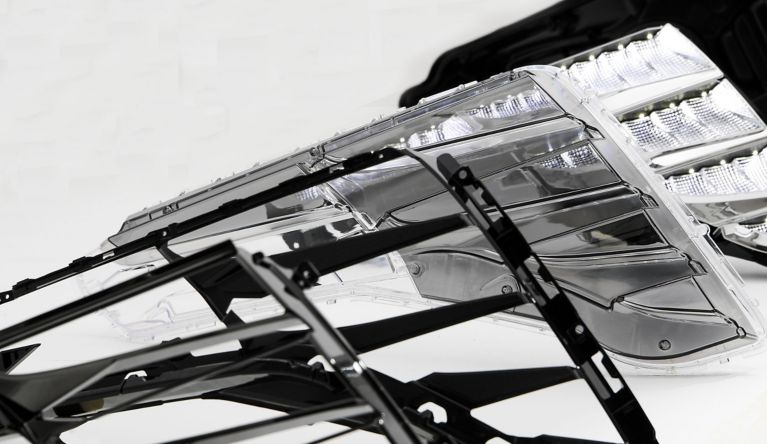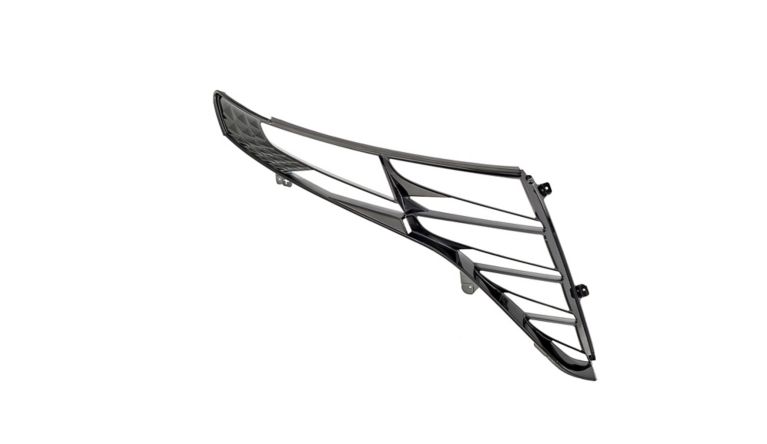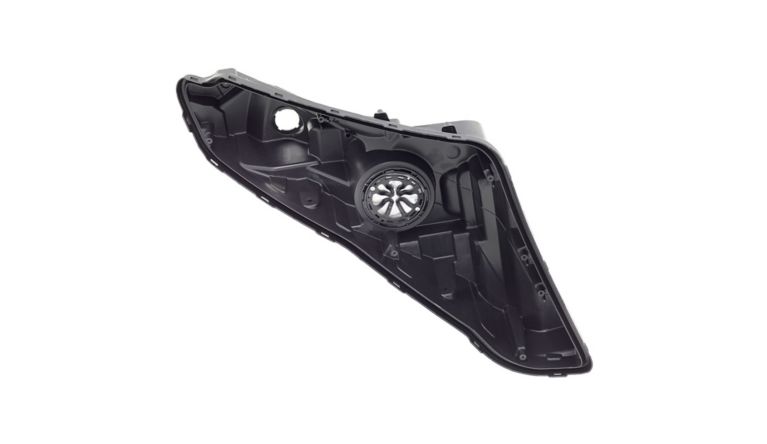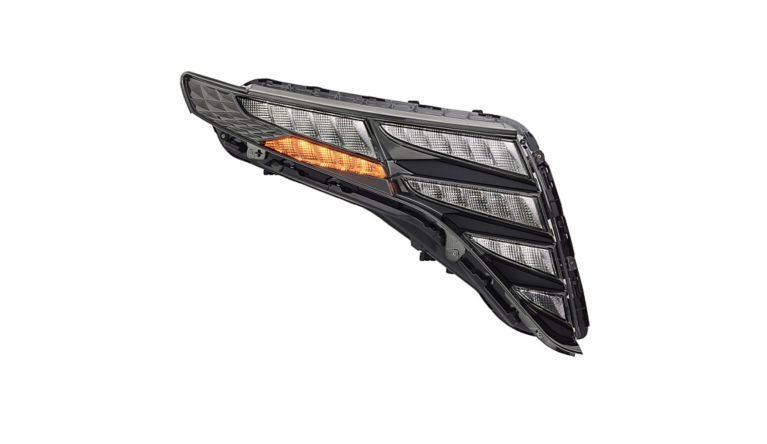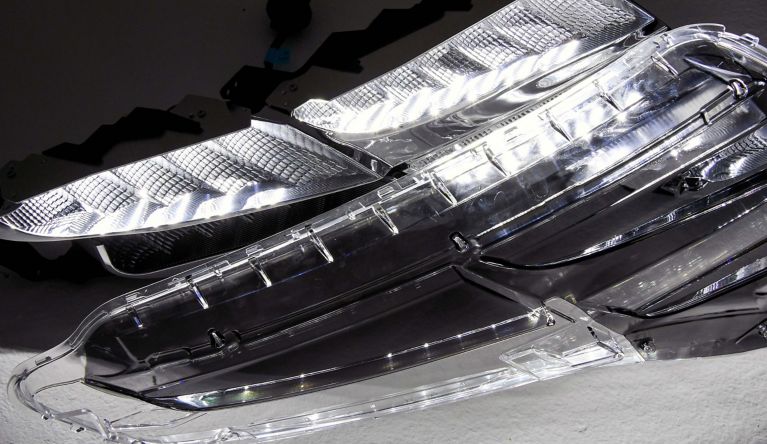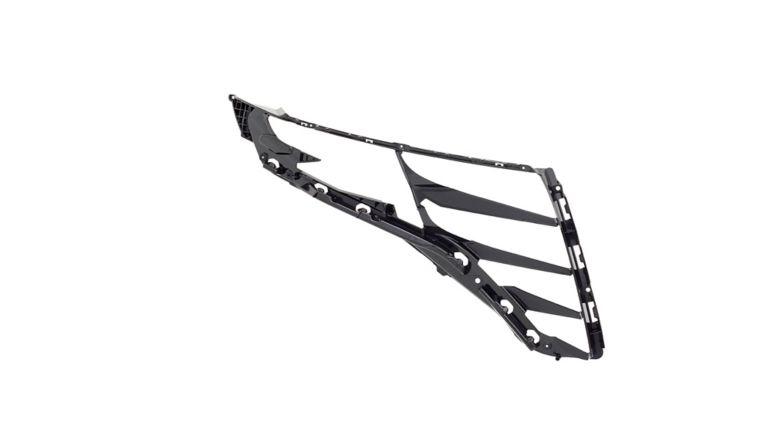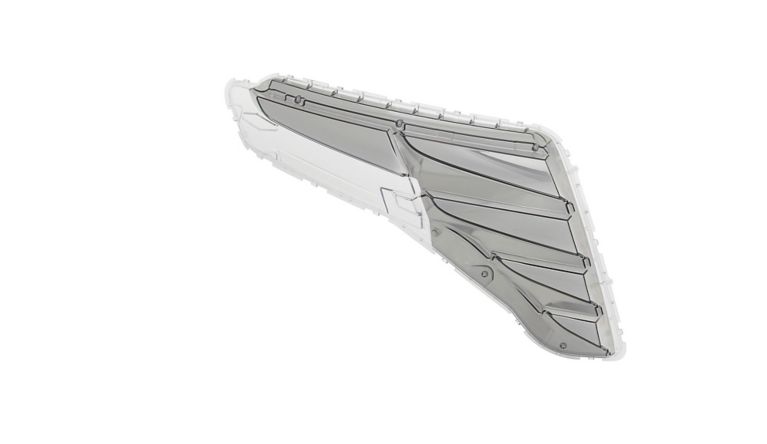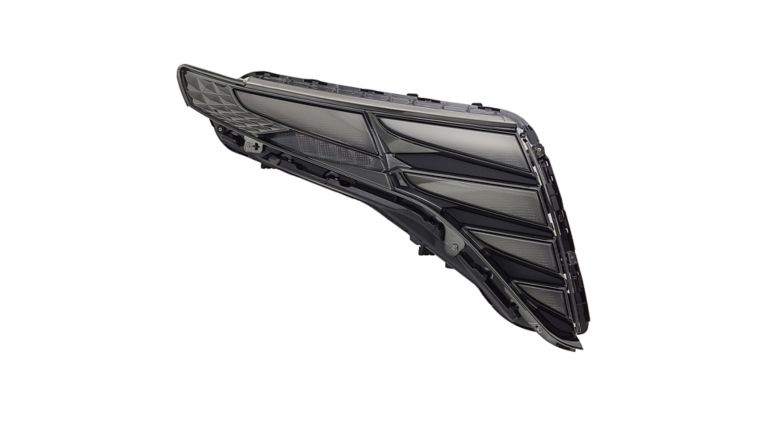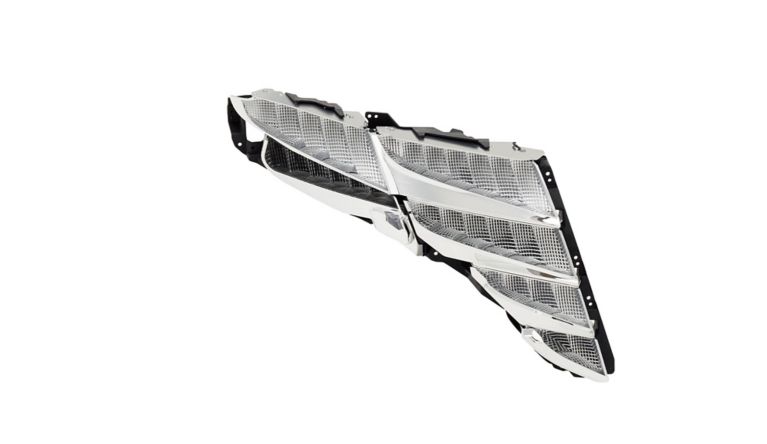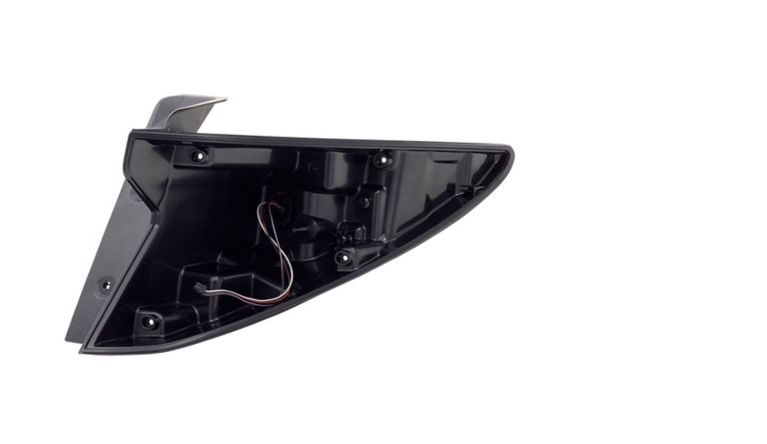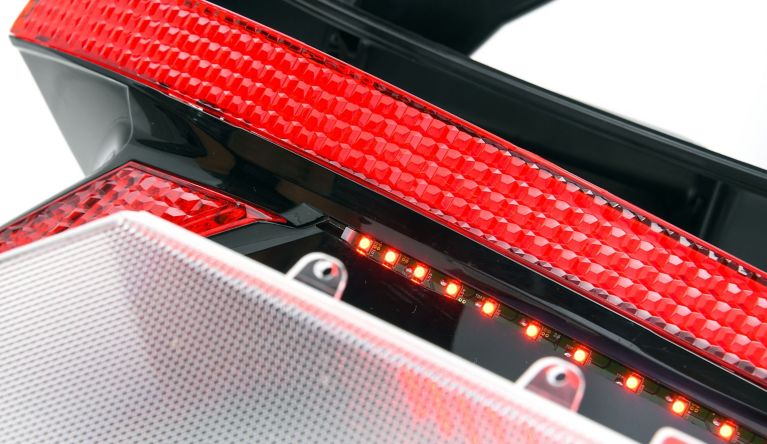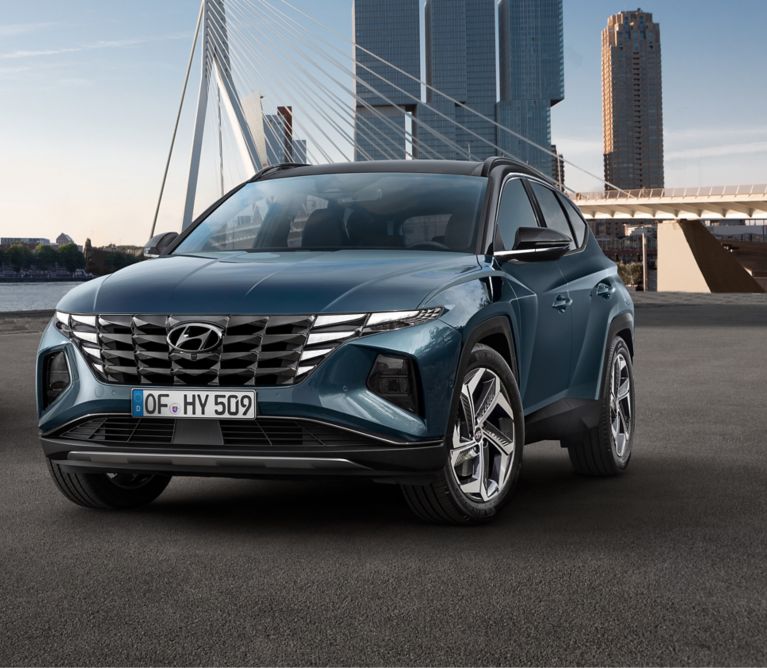- The all-new Tucson’s “Parametric Hidden Lights” give Hyundai’s best-selling SUV an unmistakable character and a unique presence on the road – even in the dark
- This design innovation seamlessly incorporates state-of-the-art lighting technology into the Tucson’s parametric jewel pattern grille
- To produce the all-new Tucson’s large lamps, Hyundai utilised state-of-the-art half-mirror lighting technology
Press material
-
Download
-
Images
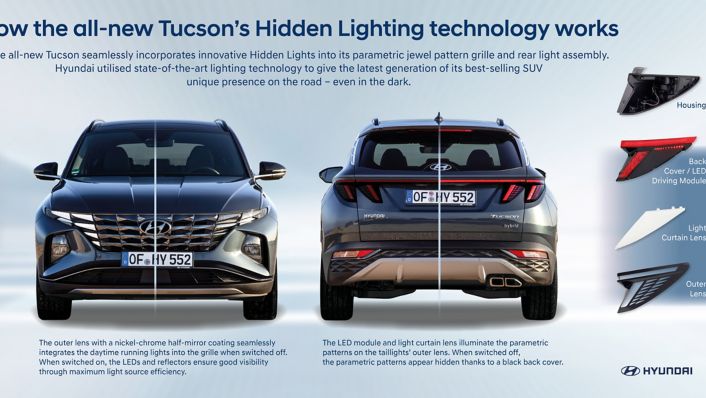
Most concept cars designed by automakers stand out due to their vivid, high-tech designs. However, most of these models do not go on to enter mass production. The all-new Tucson, on the other hand, bears an almost identical look to Hyundai’s Vision T SUV Concept, which was unveiled at the 2019 LA Auto Show. Vision T gained public attention at the time for conveying Hyundai’s new “Sensuous Sportiness” design identity and a bold radiator grille featuring futuristic Parametric Hidden Lights.
This design innovation seamlessly incorporates state-of-the-art lighting technology into the Tucson’s parametric jewel pattern grille, which forms the car’s striking light architecture. These Parametric Hidden Lights are a complete version of Hyundai’s “Hidden Lighting” technology, first applied to some of the company’s non-European models.
Hyundai’s first Hidden Lighting technology
In 2019, Palisade, Hyundai’s flagship SUV globally, became the first vehicle to be equipped with the company’s Hidden Lighting technology. Its long, vertically stretched tail lamp is connected to a matte chrome garnish. Usually, the garnish is just one of many design elements that adds a three-dimensional effect; but when turned on, it gives off subtle rays of LED lighting and glows softly. These early Hidden Lights were introduced primarily for aesthetic reasons, adding beauty to Palisade’s tail lamps.
Hidden Lighting Technology for Daytime Running Lights
Later that year, another model, the eighth-generation Sonata, became the first Hyundai model to feature Hidden Lighting technology in the headlamps. Sonata’s designers, also guided by the “Sensuous Sportiness” design identity, found a novel way to hide LED lamps in chrome garnish. They achieved this by applying chrome surfaces inside Sonata’s Daytime Running Lights (DRLs), which appear like a regular chrome garnish when the lights are off. This was accomplished through a “laser-etching” process, which etched the chrome over the LED at different intensity and intervals. Sonata’s DRLs provide increased visibility due to the wider area of light emitted by the application of Hidden Lighting technology.
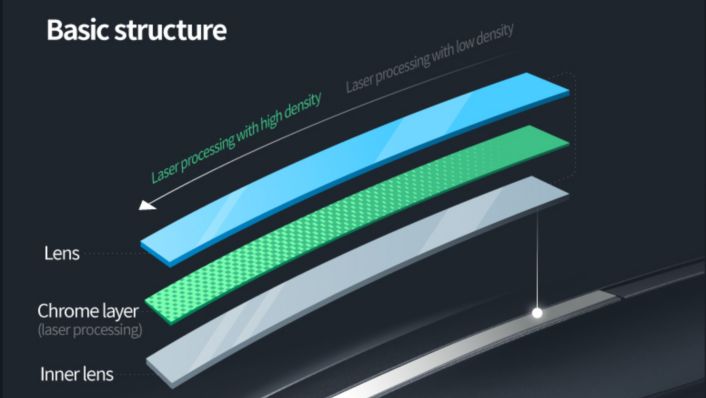
Hidden Lighting in the new Hyundai Grandeur
Since then, Hyundai has expanded its application of Hidden Lighting technology through the New Grandeur, another model available outside of Europe. This became the first Hyundai vehicle to incorporate Hidden Lighting technology into its radiator grille.
However, unlike Sonata, the New Grandeur’s Hidden Lights had to meet certain safety requirements. Although Sonata’s Hidden Lighting serves a strong design purpose, the new Grandeur’s Hidden Lights also serve as a DRLs as well as indicator lights, where visibility is paramount.
The all-new Tucson’s Parametric Hidden Lights
The most distinctive feature of the all-new Tucson is that it perfectly reproduces the bold and futuristic frontal design of the Vision T Concept. When its lights are switched off, the front of the vehicle appears covered in dark, geometric patterns, with no distinction between the grille and the seamlessly integrated signature LED DRLs.
The all-new Tucson’s DRLs are about five times larger than those of the new Grandeur. Therefore, if the laser-etching technique were to be applied to drill fine holes for effective light penetration, it would look different than the radiator grille when switching off, and the manufacturing time would be too long. To produce the all-new Tucson’s large lamps, Hyundai utilised state-of-the-art half-mirror lighting technology. This process involved applying a thin layer of specialised metal surface coating on the inner part of the outer lens. When the DRLs are switched on, the dark chrome grille appears to transform into jewel-like shapes, bringing an eye-catching element to an otherwise sleek appearance.
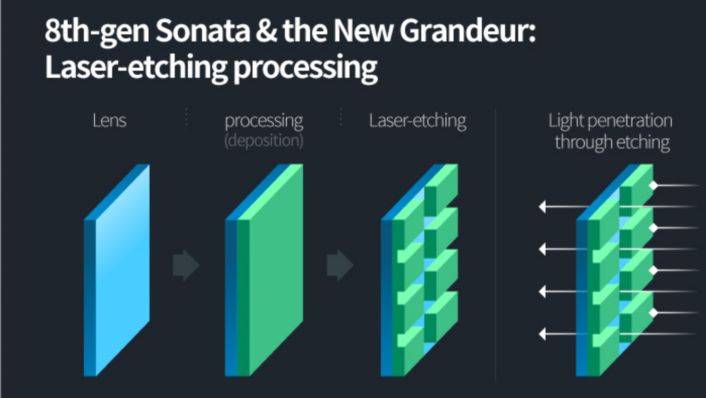
The structure of the all-new Tucson’s Hidden Lights
As the new construction method was applied, Hyundai’s engineers proceeded by verifying their reliability and made improvements accordingly. By setting up harsh virtual environmental conditions by varying the heat sources inside and outside of the lamps, they were able to test for cracks and for heat expansion. The engineers applied nickel-chrome materials to provide heat resistance, while using subtle dark chromium colours in the radiator grille to ensure both durability and shade. As a result, the all-new Tucson’s Hidden Lights can withstand complex environmental conditions.
Adding materials to the LED lamp’s lens naturally reduces light penetration, reducing efficiency. It was therefore necessary to reinforce the brightness of the lights in order to adhere to safety standards. Hyundai increased the power and number of LED units in order to increase the brightness so that it exceeded the required level, even after applying the nickel-chrome coating.
Thanks to the increased performance of LED modules, it was possible to ensure the power and visibility of the LEDs. This allowed Hyundai’s designers to integrate jewel-like lamps by applying half-mirror-type lights. In addition, the outer lenses were coated with nickel-chrome on the inside. This means they look exactly like the radiator grille when switched off, and also serve as the DRLs and direction indicator lights while switched on.
However, the increased amount of electricity also means an increased temperature inside the lamps. In response to this, Hyundai introduced Over-Heat Protection (OHP) technology. This system uses a temperature sensor to prevent damage. If the sensor detects excessive heat, it immediately reduces the amount of power in order to regulate the lamp module’s temperature, providing a safety net that manages to satisfy the design, function, and durability of the lamp, without affecting brightness.
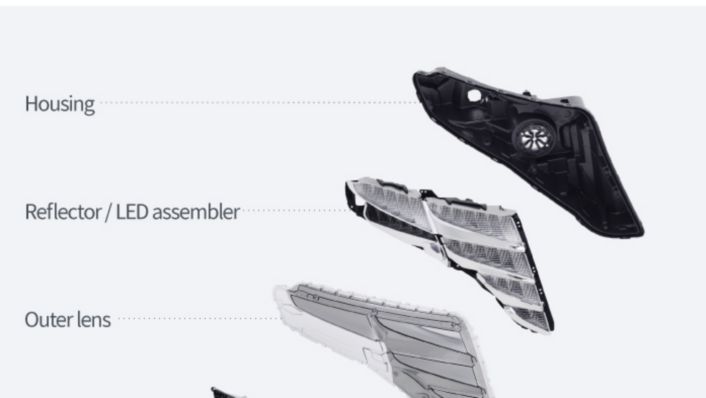
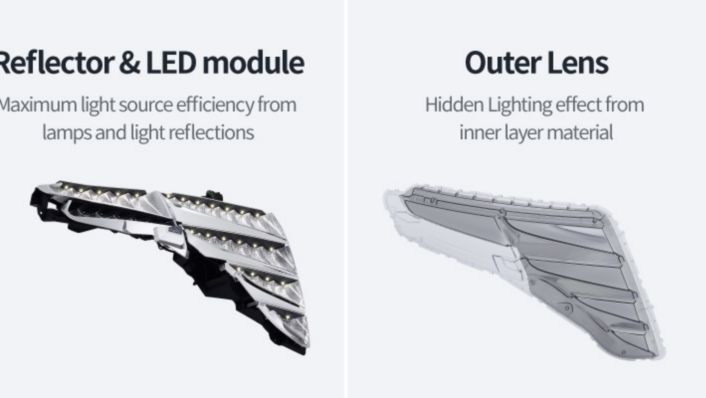
Hidden Lighting in the all-new Tucson’s tail lamps
The all-new Tucson’s designers also applied Hidden Lighting technology to its equally-dramatic tail lamps. These appear as triangular parts arranged on either side of the tail lights and stretch horizontally. The grey translucent lenses partially block out light from the outside when the lights are switched off. When the LED lights are switched on, the light curtain lens spreads the light widely and evenly, completing the intense look that appears as if the triangles spread their “wings” together.
However, the implementation method differed from that of the DRLs, which used the half-mirror technology. The outer lens of the tail lamp was processed through the use of both a translucent lens and a black lens with a relatively low penetration rate. In addition, the inner parts of the back cover were all coloured black to maximise the Hidden Lighting effect. Hyundai’s designers completed the look of the all-new Tucson’s unique rear tail lamps with engraved triangular patterns. When the lights are off, these parts hide the light curtain lenses and conceal them.
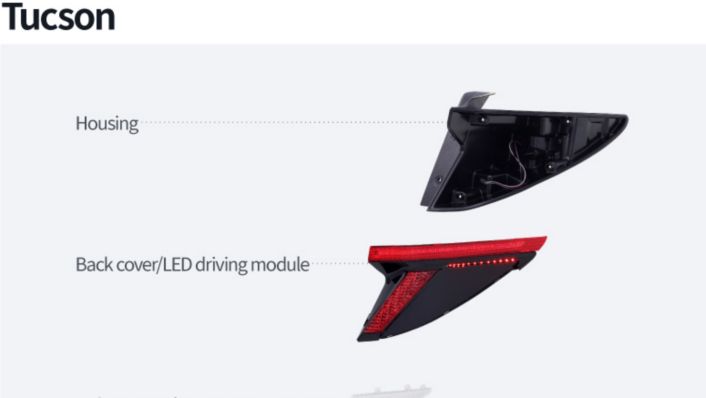
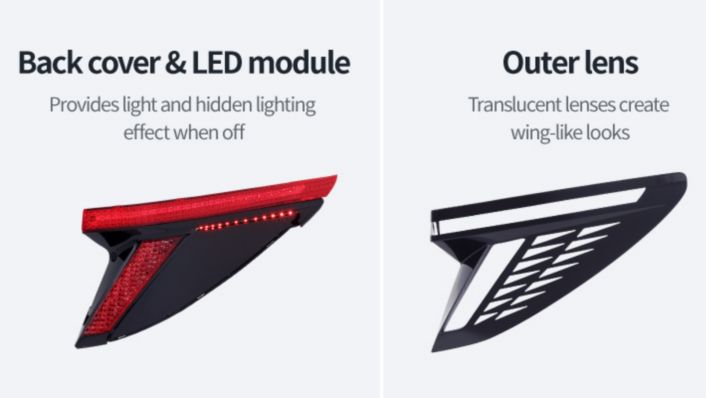
Hyundai intends apply its Hidden Lighting and half-mirror LED technology to more models in the future. In particular, the new processing technique can be used for much larger lamps, such as those of the all-new Tucson. The company expects that its future self-driving vehicles will be able to send information directly through their lamps to surrounding vehicles and pedestrians alike. In taking the Vision T Concept’s Hidden Lighting technology to the next level, the all-new Tucson demonstrates that beautiful design can only be achieved through technological evolution.

